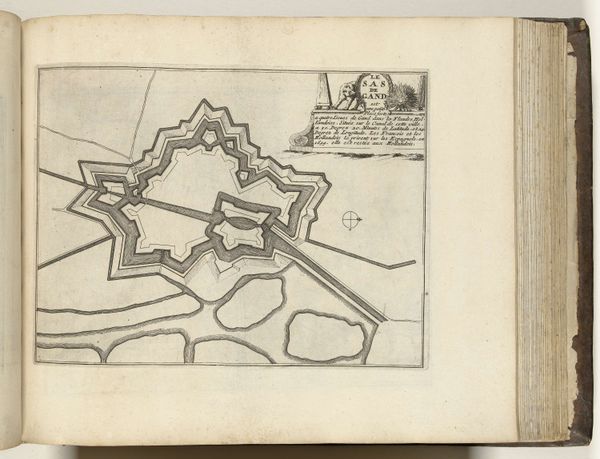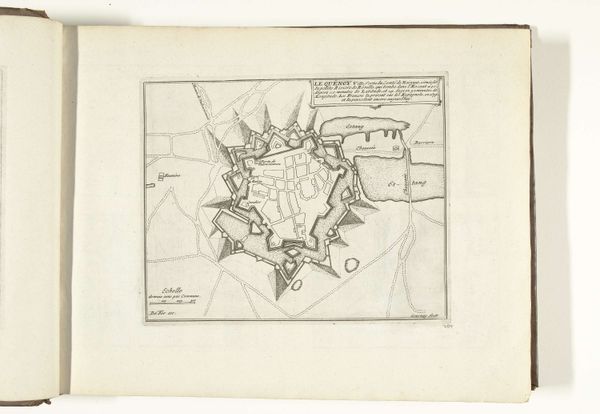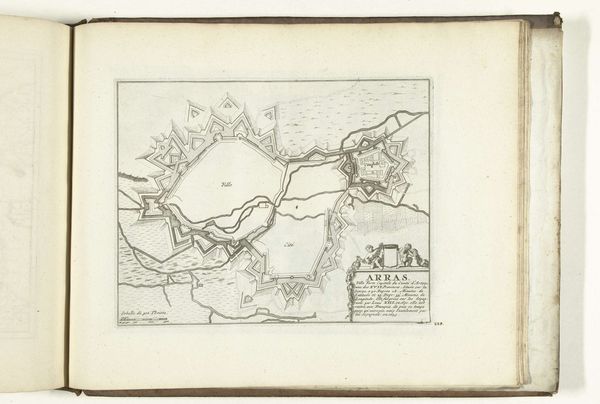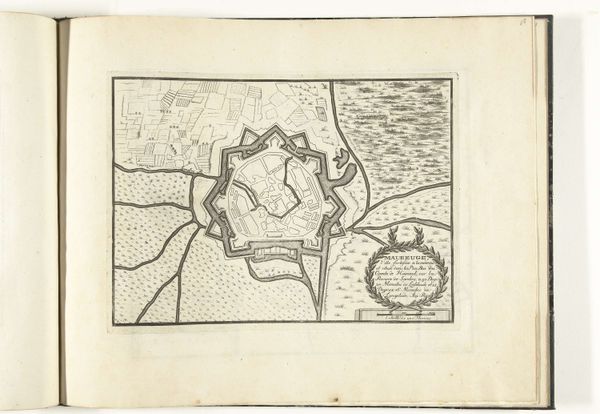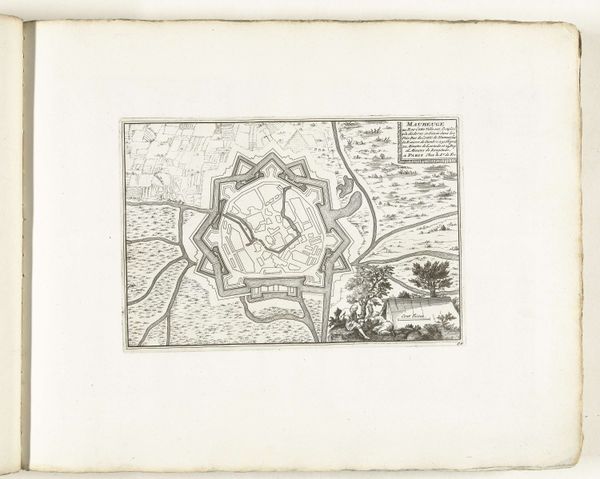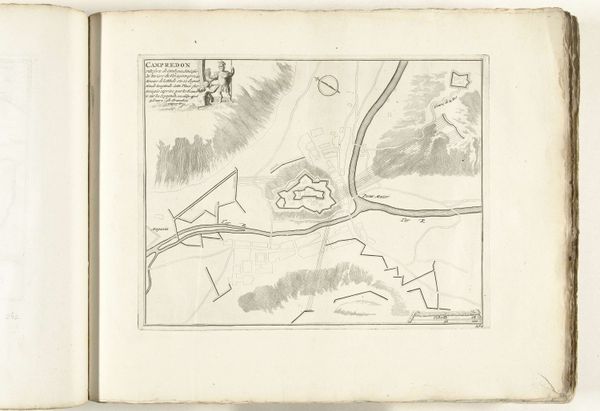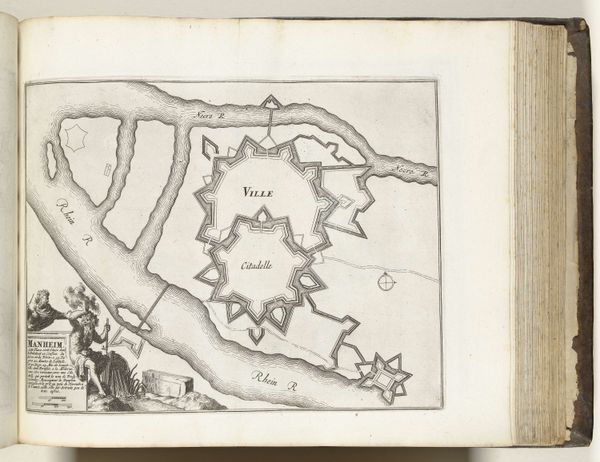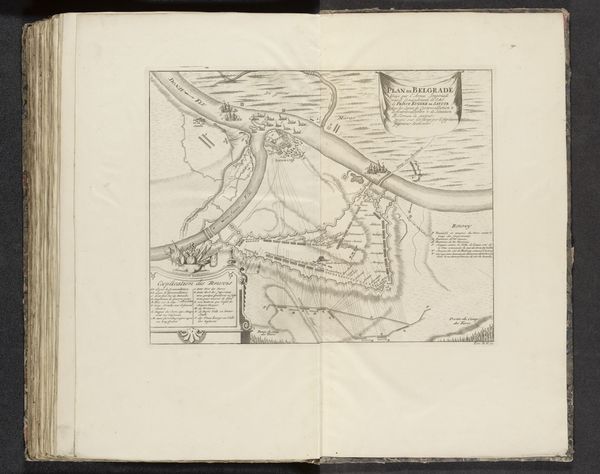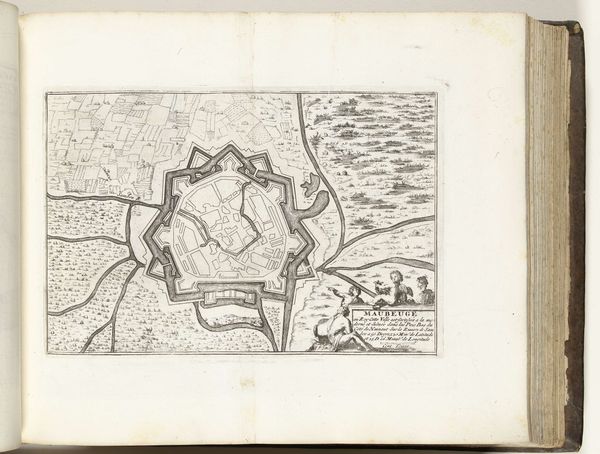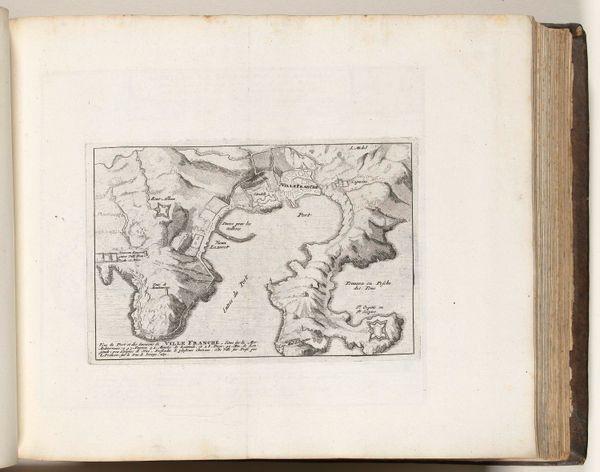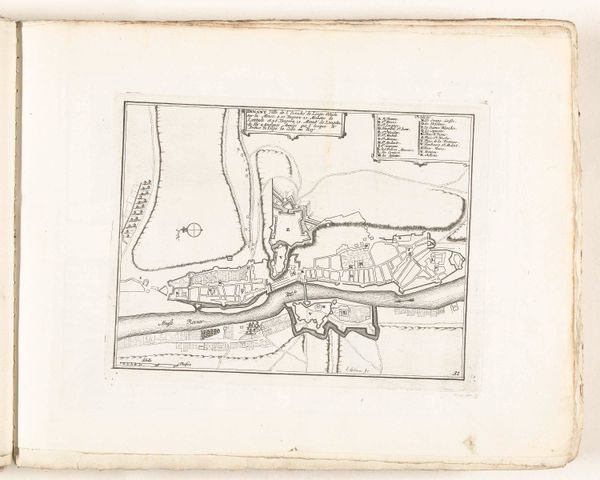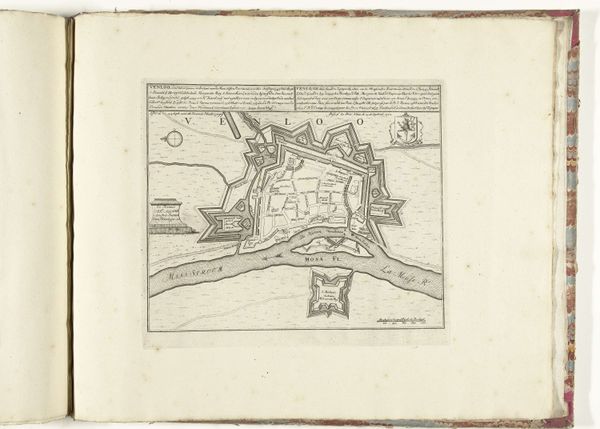
drawing, print, paper, engraving
#
drawing
#
baroque
# print
#
paper
#
geometric
#
15_18th-century
#
line
#
cityscape
#
history-painting
#
engraving
Dimensions: height 201 mm, width 260 mm
Copyright: Rijks Museum: Open Domain
Editor: This is "Plattegrond van Sas-van-Gent, 1726," a print and drawing on paper. I find the stark lines and geometric forms really intriguing. It's a baroque cityscape, almost like an abstract pattern. What catches your eye? Curator: Well, considering this engraving, let's think about the production. The materials involved—paper, ink, the metal plate for the engraving—aren't simply neutral supports, but active participants in constructing meaning. This isn’t just about aesthetics; it’s about the labor invested in creating a representation of power. What does the cityscape itself convey to you, thinking about that labor? Editor: I see a controlled, almost militaristic layout. It feels very planned and deliberate, a stark contrast with any organic sense of growth. The clean lines show organization. Curator: Exactly! The lines aren't just lines; they represent walls, fortifications, control. This isn’t just a city, but a fortress, a site of production designed for defense and resource management. What might the social context surrounding the production of such imagery have been? Editor: Thinking about the 18th century, I imagine conflict and territorial disputes played a big role. Maybe this print was meant to showcase military might or to assist in strategic planning. Curator: Precisely. And think about the consumption of this image. Who would have bought it? What purpose would it serve? A military leader? A wealthy merchant looking to invest? The print's function dictated its value. Editor: That makes sense. I never really thought about who would purchase a plattegrond, it seems like only function matters, not art. Curator: See how shifting the focus to materials, production, and consumption transforms our understanding? It's not just a pretty picture; it's a historical artifact deeply embedded in social and economic relations. Editor: Absolutely. Considering the historical context gives such a new layer of insight. Thanks, I have so much to think about.
Comments
No comments
Be the first to comment and join the conversation on the ultimate creative platform.
